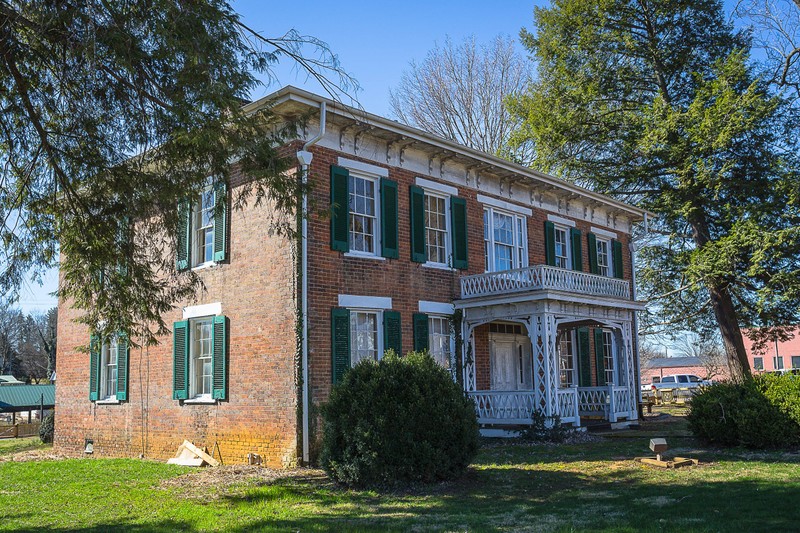Fields-Penn House
Introduction
Text-to-speech Audio
Images
Fields Penn House facade

Backstory and Context
Text-to-speech Audio
The two-story, rectangular Greek Revival style house that sits at the corner of West Main Street and Cummings Street in Abingdon is one of the town’s most recognized houses. The house was constructed by James Fields as his personal residence, who was a prominent brick mason and contractor within the greater Abingdon area. Born in 1820, James was born one of eight children to William and Elizabeth Lynch Fields. His parents jointly operated a brick masonry business, his mother being from a prominent stone mason family of the area. William suddenly passed away in 1829 when James was nine years old, but his mother carried on the masonry business with assistance from her children, apprentices, and slaves. James naturally carried on the family business into adulthood.
James married Susan Ellen Owen of Blountville, Tennessee in 1847. By 1850, James and Susan returned to Abingdon where James began his own brick masonry business. James and Susan’s family grew rapidly during 1850s, welcoming five children by the end of the decade. James’ wealth and status also grew during this time, which gave him the ability to construct a large house on West Main Street in Abingdon. Completed in 1860 this two-story, rectangular house was designed in the prominent Greek Revival style of the era, and features large double-sash windows and a rear-ell. The house features many high-style characteristics of the Greek Revival style than most other vernacular homes of the same style.
During the Civil War, James Fields joined the 48thVirginia Infantry as a Captain and served as a Commissary. He and his house both survived the war. After the war, James continued to work as a brick mason and contractor, even being elected Washington County Sheriff. While his business and political standing grew during the fifteen years after the war, the Fields’ financial holdings fell towards the end of the 19th-Century. In 1895, the year before James Fields passed away, the house was sold to George Edward Penn and his wife Estelle Gilmore Penn from Danville, Virginia.
The Penns and their eight children resided in the house for the next 75 years. In 1971, the family sold the house to the Penn House Preservation Foundation, who then granted it to the Town of Abingdon. The William King Regional Arts Center began managing the house and converted it into a house museum after 1995. The Fields-Penn 1860 House Museum was opened to the public until 2015 when it closed permanently due to severe structural problems. The future of the Fields-Penn House remains in limbo today, as the estimated cost of repairs is upwards of $1.2 million.
The Fields-Penn House was designated a Virginia Landmark on April 15, 1986 and added to the National Register of Historic Places on September 17, 1986.Cite This Entry
Martin-Gross, Kalen. "Fields-Penn House." Clio: Your Guide to History. March 25, 2019. Accessed March 31, 2025. https://theclio.com/entry/65570
Sources
140-0039 Abingdon Historic District Extension. Virginia Department of Historic Resources. November 28, 2018. March 14, 2019. https://www.dhr.virginia.gov/historic-registers/140-0039/.
About Us. The Fields-Penn House. March 14, 2019. https://fieldspennhouse.com/about/.

